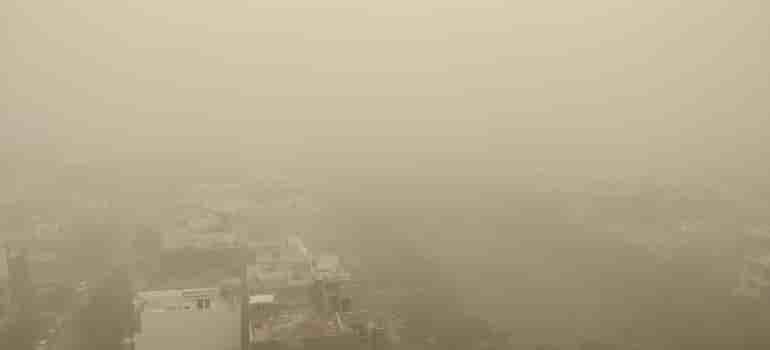Mega cities across India have experienced worsening PM2.5 levels during the winter season of 2022-23, according to an analysis of real-time data conducted by the Centre for Science and Environment (CSE).
The research evaluated levels of particulate pollution in Delhi, Kolkata-Howrah, Mumbai, Hyderabad, Bengaluru and Chennai between 1 October 2022 and 28 February 2023.
While Delhi had the highest levels, the other five cities also experienced very poor to worsening trends. The CSE is urging cities to implement round-the-year action to reduce emissions.
Kolkata and Mumbai had the highest levels after Delhi, while air quality worsened fastest in Bengaluru and Chennai.
“While Delhi’s winter air quality hogs all the eyeballs, the rising winter air pollution in other mega cities including Kolkata, Mumbai, Hyderabad, Bengaluru and Chennai, does not get adequate attention. While Delhi has bent its seasonal pollution curve, winter air pollution is high or on the rise in most other mega cities. These cities located outside the northern plains may have more favourable meteorological conditions to contain the peaking of pollution during winters, but their overall city average and levels across locations can cause very high exposures. This demands round the year action to control emissions in cities that are motorising and urbanising rapidly,” says Anumita Roychowdhury, executive director-research and advocacy, CSE.
“Winter season presents a serious challenge in all mega cities despite them being located in different geo-climatic zones with varying meteorological and topographical conditions. The PM2.5 levels remain elevated and peak during winter in all mega cities. This winter, several of these cities (excluding Delhi) recorded higher seasonal PM2.5 averages compared to their previous winter. This clearly indicates that the overall emissions are high or may be rising in those cities,” says Avikal Somvanshi, seniour programme manager, Centre for Science and Environment.
Somvanshi said “The winter period is a special challenge in all cities as adverse meteorological conditions trap pollution and increase concentration and exposures. The impact is worse if the overall pollution in the city is high and is worsening.”
Roychowdhury added “This demands stringent action round the year as well as emergency action during the bad-air days to bring down the overall pollution levels. Efforts should focus on reducing emissions from vehicles, industry, waste burning, construction, and solid fuels in households, among others. This is also needed to meet the new target of 40 per cent reduction in particulate pollution under the National Clean Air Programme.”


